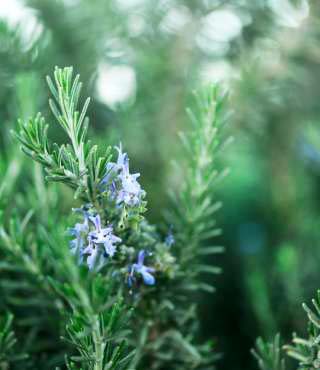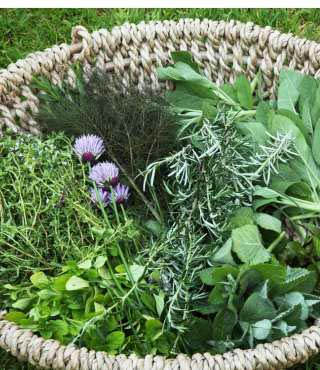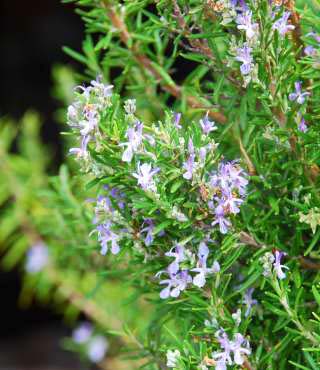Rosemary Varieties Based On Growth Habit
Types of Rosemary Plants Discover a range of rosemary varieties based on their growth habit. From trailing to upright and compact forms, each type offers unique characteristics and beauty to your garden. Explore the diverse options to find the perfect rosemary plant for your landscape.
Upright Rosemary
Upright rosemary varieties are known for their tall and erect growth habit, making them ideal for hedges, borders, and even as a centerpiece in herb gardens. These robust plants can reach heights of up to 3-6 feet, adding a vertical element to your garden landscape. One of the most popular varieties of upright rosemary is ‘Tuscan Blue.’ Its deep blue flowers and aromatic foliage make it a favorite among gardeners and chefs alike. Another notable upright variety is ‘Arp,’ which is well-known for its cold hardiness and ability to withstand extreme weather conditions.
Prostrate Rosemary
If you are looking for a rosemary variety that spreads low and wide, prostrate rosemary is the perfect choice. These trailing plants feature cascading branches that create a beautiful groundcover, spilling over walls and containers with elegance. One of the most commonly grown prostrate varieties is ‘Huntington Carpet.’ With its delicate blue flowers and trailing growth habit, it adds a touch of charm to any garden. ‘Prostratus’ is another notable prostrate variety, known for its ability to thrive in sunny, well-drained locations and its resistance to deer browsing. In addition to upright and prostrate varieties, there are also other rosemary plants with unique growth habits.
Some varieties have a more compact growth habit, which makes them suitable for container gardening or small spaces. One such variety is ‘Miss Jessopp’s Upright,’ which reaches a modest height of 1-3 feet. On the other hand, ‘Golden Rain’ is a dwarf rosemary variety that features bright golden foliage, adding a splash of color to your garden. No matter the growth habit, rosemary plants are valued for their aromatic leaves, culinary uses, and ornamental appeal.
Whether you prefer the upright stature of ‘Tuscan Blue,’ the trailing wonder of ‘Huntington Carpet,’ or the compact nature of ‘Miss Jessopp’s Upright,’ there is a rosemary variety to cater to every gardener’s preference. So, why not explore the world of rosemary plants and add these versatile herbs to your garden today?
Rosemary Varieties Based On Leaf Characteristics

When it comes to rosemary plants, there are various varieties available, each with its own unique characteristics. One way to differentiate these varieties is based on their leaf characteristics. This article will explore two popular types of rosemary plants, namely Common Rosemary and Dwarf Rosemary, focusing on the distinguishing features of their leaves.
Common Rosemary
Common Rosemary, scientifically known as Rosmarinus officinalis, is one of the most widely cultivated rosemary varieties. This classic herb is loved for its aromatic fragrance and culinary uses. When it comes to leaf characteristics, Common Rosemary has elongated, needle-like leaves that are dark green and glossy. These leaves are arranged oppositely along the stem and can grow up to one inch in length, offering a distinct, traditional appearance.
Dwarf Rosemary
For those looking to cultivate rosemary in smaller spaces or containers, Dwarf Rosemary, scientifically known as Rosmarinus officinalis ‘Prostratus,’ is an ideal choice. True to its name, this variety offers a compact and low-growing form, perfect for creating attractive groundcover or edging. In terms of leaf characteristics, Dwarf Rosemary has tiny, narrow leaves that are soft to the touch. These leaves are arranged in whorls, creating a denser texture compared to Common Rosemary.
| Variety | Scientific Name | Leaf Characteristics |
| Common Rosemary | Rosmarinus officinalis | Elongated, needle-like leaves; dark green and glossy; arranged oppositely along the stem |
| Dwarf Rosemary | Rosmarinus officinalis ‘Prostratus’ | Tiny, narrow leaves; soft to the touch; arranged in whorls |
So, whether you prefer the traditional charm of Common Rosemary or the compact growth habit of Dwarf Rosemary, both varieties offer unique leaf characteristics that contribute to their overall appeal. Consider these leaf characteristics when selecting the perfect rosemary plant for your garden or culinary endeavors.
Rosemary Varieties Based On Flower Color
Rosemary plants are not only known for their fragrant leaves and culinary uses, but also for their beautiful flowers. The flowers of rosemary come in a variety of colors, including blue and pink. Here, we will explore two popular rosemary varieties based on their distinctive flower colors.
Blue Rosemary
Blue rosemary, also known as Rosmarinus officinalis ‘Blue Spires’, is a stunning herb that adds a touch of color to any garden. The flowers of this variety are vibrant blue in color, which make them stand out among other plants. The blue flowers not only look beautiful, but they also attract pollinators, such as bees and butterflies, to your garden.
Blue rosemary is a versatile plant that thrives in both containers and garden beds. It requires well-drained soil and full sun to bloom to its full potential. This variety of rosemary can be used in various dishes, such as roasted meats, soups, and stews, to add a subtle floral flavor.

Pink Rosemary
Pink rosemary, scientifically known as Rosmarinus officinalis ‘Pink Beauty’, is a charming herb with delicate pink flowers. The soft pink blooms contrast beautifully with the plant’s green foliage, creating an eye-catching display in any garden or landscape. Pink rosemary not only adds visual appeal, but it also attracts beneficial insects, such as bees, which help with pollination.
This rosemary variety is easy to grow and maintain. It prefers well-drained soil and thrives in sunny locations. Pink rosemary can be used as an ornamental plant, as well as an ingredient in various culinary dishes. Its subtle floral notes can enhance the flavor of desserts, salads, and even herbal teas.
Rosemary Varieties Based On Culinary Use
Discover a variety of rosemary plants suited for culinary use. From Tuscan Blue to Spice Island, these aromatic herbs are perfect for enhancing the flavor of your favorite dishes. Explore the diverse world of rosemary varieties to elevate your cooking experience.
Classic Culinary Rosemary
One of the most popular and widely used types of rosemary for culinary purposes is the Classic Culinary Rosemary. Its strong and distinct aroma, along with its robust flavor, makes it the go-to choice for chefs and home cooks alike. This variety of rosemary is characterized by its narrow and elongated leaves, which are dark green in color. Its woody stems are covered with fine hairs, adding to its overall appearance.
Culinary Rosemary
Another type of rosemary that is commonly used for culinary purposes is simply known as Culinary Rosemary. This variety shares many similarities with the Classic Culinary Rosemary, including its strong fragrance and taste. The leaves of Culinary Rosemary are also narrow and dark green, but they tend to be slightly shorter and wider than those of the Classic Culinary Rosemary. This variety is often preferred for its versatility, as it works well in a variety of dishes and recipes.
Health Benefits Of Rosemary In Cooking

In addition to its culinary uses, rosemary also offers a range of health benefits when incorporated into cooking. This herb is packed with nutrients, including vitamins A and C, as well as minerals like calcium and iron. Rosemary is also rich in antioxidants, which help protect the body against damage caused by free radicals. Additionally, consuming rosemary has been linked to improved digestion, enhanced brain function, and reduced inflammation.
How To Use Rosemary In Cooking
Given its strong flavor, it’s important to use rosemary judiciously in cooking to avoid overwhelming other ingredients. Here are some simple ways to incorporate rosemary into your culinary creations: – Sprinkle fresh or dried rosemary leaves over roasted vegetables for added flavor. – Infuse rosemary leaves in olive oil for a fragrant and flavorful drizzle. – Add rosemary to marinades and rubs for meats to enhance their taste. – Use rosemary sprigs as skewers for grilled kebabs, infusing them with a subtle herbaceous aroma. It’s important to note that rosemary leaves can be quite tough, so it’s best to chop them finely or grind them before adding them to your dishes. This will help release their essential oils, ensuring maximum flavor infusion.
Frequently Asked Questions For Types Of Rosemary Plants
Are There Different Types Of Rosemary Plant?
Yes, there are different types of rosemary plants available, including Tuscan Blue, Arp, and Prostrate Rosemary. Each variant has its unique characteristics and growth habits.
Are All Types Of Rosemary Edible?
Yes, all types of rosemary are edible. They can be used in cooking to add flavor to various dishes.
What Is The Best Variety Of Rosemary For Cooking?
The best variety of rosemary for cooking is Tuscan Blue. It has a strong flavor and aroma that enhances dishes like roasted meats and vegetables.
What Is The Most Fragrant Type Of Rosemary?
The most fragrant type of rosemary is the “Arp” variety, known for its strong aroma.
Conclusion

Understanding the different types of rosemary plants can help you choose the ideal one for your garden or culinary needs. Whether you prefer the delicate beauty of the creeping rosemary or the robust flavor of the Tuscan blue variety, each type offers its unique characteristics and benefits.
By selecting the right rosemary plant, you can enhance your cooking, gardening, and overall well-being. So go ahead, explore the wonderful world of rosemary and elevate your experience with this versatile herb.





Leave a Reply